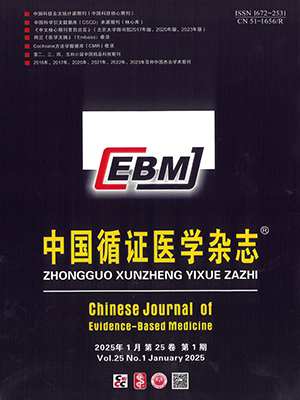| 1. |
世界卫生组织烧伤实况报道第 365 号. 2016 年 9 月. Available at: http://www.who.int/mediacenter/factsheets/fs365/zh/.
|
| 2. |
柴家科. 实用烧伤外科学. 北京: 人民军医出版社, 2014: 300-310.
|
| 3. |
包校伟, 袁华, 吴忠好, 等. 烧伤治疗 5235 例回顾分析. 中国现代手术学杂志, 2015, 19(5): 379-380.
|
| 4. |
National Burn Repository, 2015 report: American Burn Association, 2015. Avaliable at: http://www.ameriburn. org/2015NBRAnnualReport.pdf.
|
| 5. |
Toon MH, Maybauer MO, Greenwood JE, et al. Management of acute smoke inhalation injury. Crit Care Resusc, 2010, 12(1): 53-61.
|
| 6. |
吴斌, 田方圆, 占美, 等. 大鼠烧伤模型构建实验的系统评价. 中国循证医学杂志, 2016, 16(11): 1354-1359.
|
| 7. |
Hooijmans CR, Tillema A, Leenaars M, et al. Enhancing search efficiency by means of a search filter for finding all studies on animal experimentation in PubMed. Lab Anim, 2010, 4(3): 170-175.
|
| 8. |
Hooijmans C, Rovers MM, de Vries RB, et al. SYRCLE’s risk of bias tool for animal studies. BMC Med Res Methodol, 2014, 5(14): 43.
|
| 9. |
Brown M, Desai M, Traber LD, et al. Dimethylsulfoxide with heparin in the treatment of smoke inhalation injury. J Burn Care Rehabil, 1988, 9(1): 22-25.
|
| 10. |
Kimura R, Traber LD, Herndon DN, et al. Treatment of smoke-induced pulmonary injury with nebulized dimethylsulfoxide. Circ Shock, 1988, 25(4): 333-341.
|
| 11. |
Cox Jr CS, Zwischenberger JB, Traber DL, et al. Heparin improves oxygenation and minimizes barotrauma after severe smoke inhalation in an ovine model. Surg Gynecol Obstet, 1993, 176(4): 339-349.
|
| 12. |
Murakami K, McGuire R, Cox RA, et al. Heparin nebulization attenuates acute lung injury in sepsis following smoke inhalation in sheep. Shock, 2002, 18(3): 236-241.
|
| 13. |
Tasaki O, Mozingo DW, Dubick MA, et al. Effects of heparin and lisofylline on pulmonary function after smoke inhalation injury in an ovine model. Crit Care Med, 2002, 30(3): 637-643.
|
| 14. |
Murakami K, Enkhbaatar P, Shimoda K, et al. High-dose heparin fails to improve acute lung injury following smoke inhalation in sheep. Clin Sci (Lond), 2003, 104(4): 349-356.
|
| 15. |
Enkhbaatar P, Cox RA, Traber LD, et al. Aerosolized anticoagulants ameliorate acute lung injury in sheep after exposure to burn and smoke inhalation. Crit Care Med, 2007, 35(12): 2805-2810.
|
| 16. |
付潇潇, 刘群. 低分子肝素对吸入性损伤大鼠肺愈合的影响. 天津医科大学学报, 2009, 15(4): 554-556.
|
| 17. |
付潇潇, 刘群, 耿辉. 低分子肝素联合表皮细胞生长因子对吸入性损伤大鼠肺治疗效果的研究. 中华损伤与修复杂志, 2009, 4(5): 532-537.
|
| 18. |
温丰平, 谢卫国, 蒋南红. 肝素对烧伤治疗作用的系统评价. 中华损伤与修复杂志, 2011, 6(4): 533-542.
|




